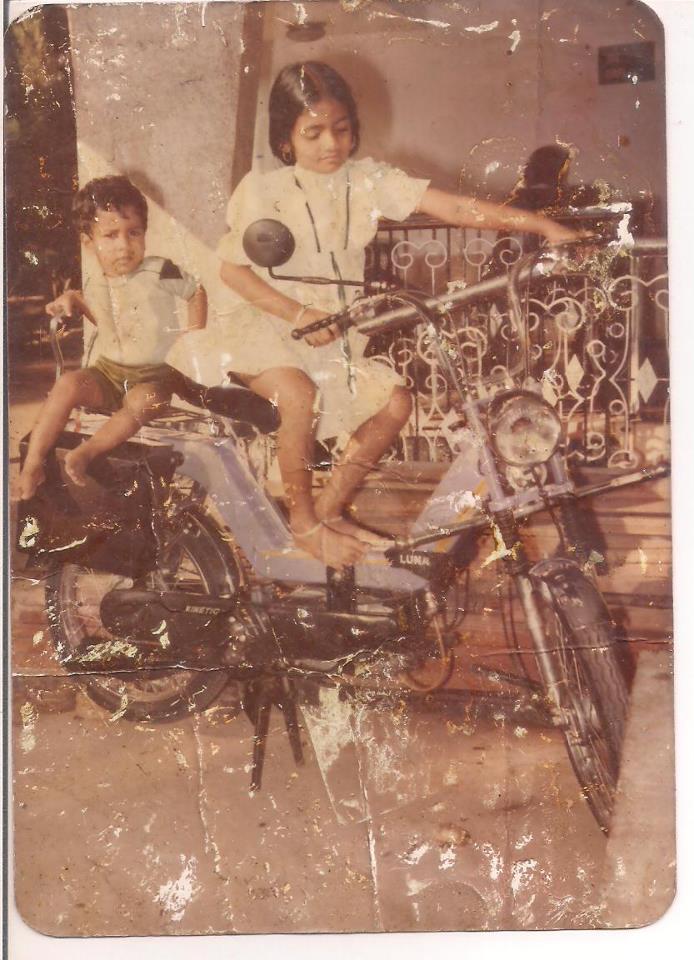A smart ad-campaign, showing ordinary Indian citizens—a government servant, a boyfriend who is always late to meet his girlfriend, an aspiring doctor—and catchphrases like “Luna karti pucca vaada, kharcha kam, mazbooti zyada” [Luna promises durability but at a lesser price] helped Luna find lakhs of takers from the middle-income group.
The advertisements told the ordinary Indian that the time they wasted while pedaling their way to their offices is the only thing standing between them and success. And thus a new player, much used but little considered, entered India’s vehicle stage—there to stay in the wings, quietly doing its part, for the next forty years.
In the early 1970s, India was divided between people who stuck to their traditional bicycles and the daredevils who had adapted to motorcycles. The middle-class was familiar with the former—it was cheap, durable and required minimal maintenance. However, the latter offered speed and comfort but at prices that tested the pockets.
Enter the year 1972, and the Pune-based Kinetic group Firodia family, in partnership with Honda, flooded the market with a 50cc bike that was evidently based on the design of a bicycle but was spruced up with a motor to reduce manual effort.
The bike weighed just 50 kg and offered the middle-class Indian an upgrade from his bicycle while still thinking of his comfort and time—all at affordable rates.

Speaking to Domain-B, Arun Firodia, the current chairman of the Kinetic Group said, “We wanted to make a small contribution to the social transformations that were taking place in India in the ’70s. With cities growing, people found it difficult to just commute on bicycles. So we felt it was the right time to introduce a low-cost vehicle that would provide mobility.”
And so Luna was born.
The moped was not aimed at the elite class who could afford to buy the faster and more expensive motorcycles. Speaking to the Business Standard (BS), Firodia said, “Characters such as Ram Murari, a government employee, Ravi Kumar, a trader, and Radha, a medical student, who were part of the campaign, were people viewers could relate to. They had issues of time management, wanted to strike a work-life balance and at the same time desired to excel in life, academics and business.
We put Luna into these situations and showed how these characters could achieve their dreams with a little help from the moped. It worked with consumers.”
Like many other brands in the market, Luna’s advertisements started out featuring stars like Shabana Azmi and Smita Patil. However, after gaining the attention of the audience, the Firodias switched to faces and stories of the common Indian.
The television advertisement featured people like them—ordinary Indians working hard to gain success. And thirdly, the tagline itself—Chal Meri Luna was a rehash of the popular Hindi song, “Chal mere ghode.” The idea was the brainchild of advertisement wizard, Piyush Pandey, who struck gold in his very first professional assignment.
You may also like: #IconsOfIndia: How The Legendary Ambassador Conquered Indian Hearts…And Roads!
The elements that went into creating the ad-campaign were simple yet brilliant. The vehicle itself was a combination of what the middle-class Indian had and what he aspired to get (cycle and motorbike respectively). The moped was so similar to a bicycle that if you ran out of fuel, you could pedal your way home.
“All the elements fell into place well – characters from everyday life, who had problems like any of us, a product that could help them achieve want they wanted and a tagline that was likeable and connected with our need to position Luna as a solutions provider,” Firodia tells BS.
The Kinetic Group used another tactic to draw the attention of Luna’s intended audience, especially the ones glued to their televisions during cricket matches which was almost every Indian.
They gave away Luna as a reward to the man of the match who may or may not have used his prize, but the marketing gimmick hit pay dirt.
The common man and woman happily embraced this new vehicle which was as yet unchallenged by foreign brands till the market gates finally opened to them. While men had the Bajaj Chetak as an alternative too, women found Luna a convenient choice due to its design as during the 70s, maxi dresses, churidars and sarees dominated the fashion scene.
You may also like: #IconsOfIndia: How a Brilliant Gujarati Created ‘Sabki Pasand Nirma’ in His Backyard
The scooter, launched in 1972, remained a super hit with the masses until the late 1990s. “Competition intensified in Kinetic Motor’s main segment of gearless scooters with the entry of large players like Honda, Suzuki and Hero Honda. The Kinetic Group decided that it would be difficult for its two-wheeler business to be profitable as a standalone scooter manufacturer,” Sulajja Firodia Motwani, the managing director of Kinetic Motor Company told Business Today.
Eventually, Luna lost its enviable place in the moped market and was replaced by sturdier, more fuel-efficient vehicles and Luna made little sense to the motorbike and car-loving public. The days of Luna might have long passed, but the country’s first purely desi moped will always be remembered fondly by the generation who witnessed a revolution on the Indian roads.
(Edited by Saiqua Sultan)
Like this story? Or have something to share? Write to us: contact@thebetterindia.com, or connect with us on Facebook and Twitter.
We bring stories straight from the heart of India, to inspire millions and create a wave of impact. Our positive movement is growing bigger everyday, and we would love for you to join it.
Please contribute whatever you can, every little penny helps our team in bringing you more stories that support dreams and spread hope.

